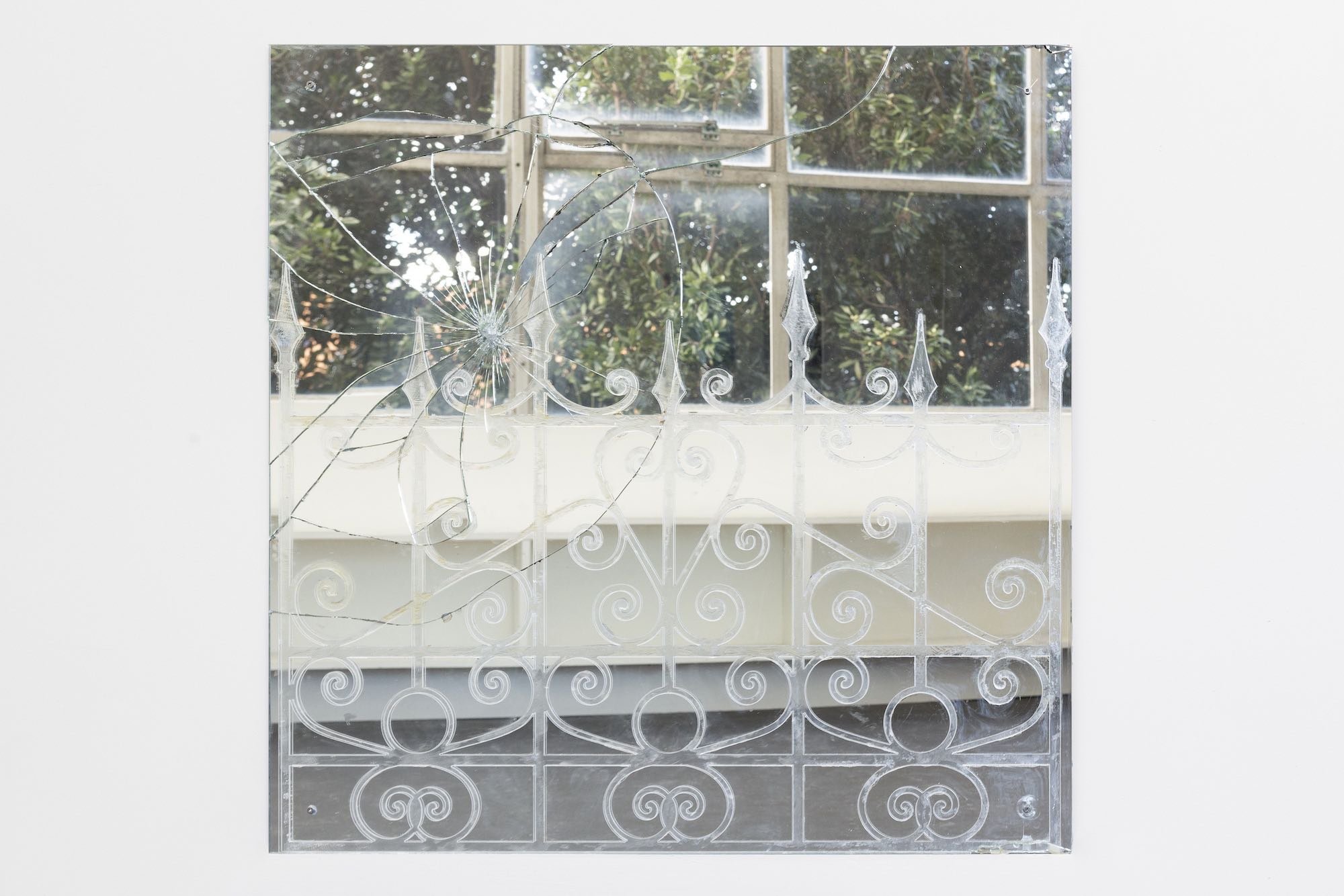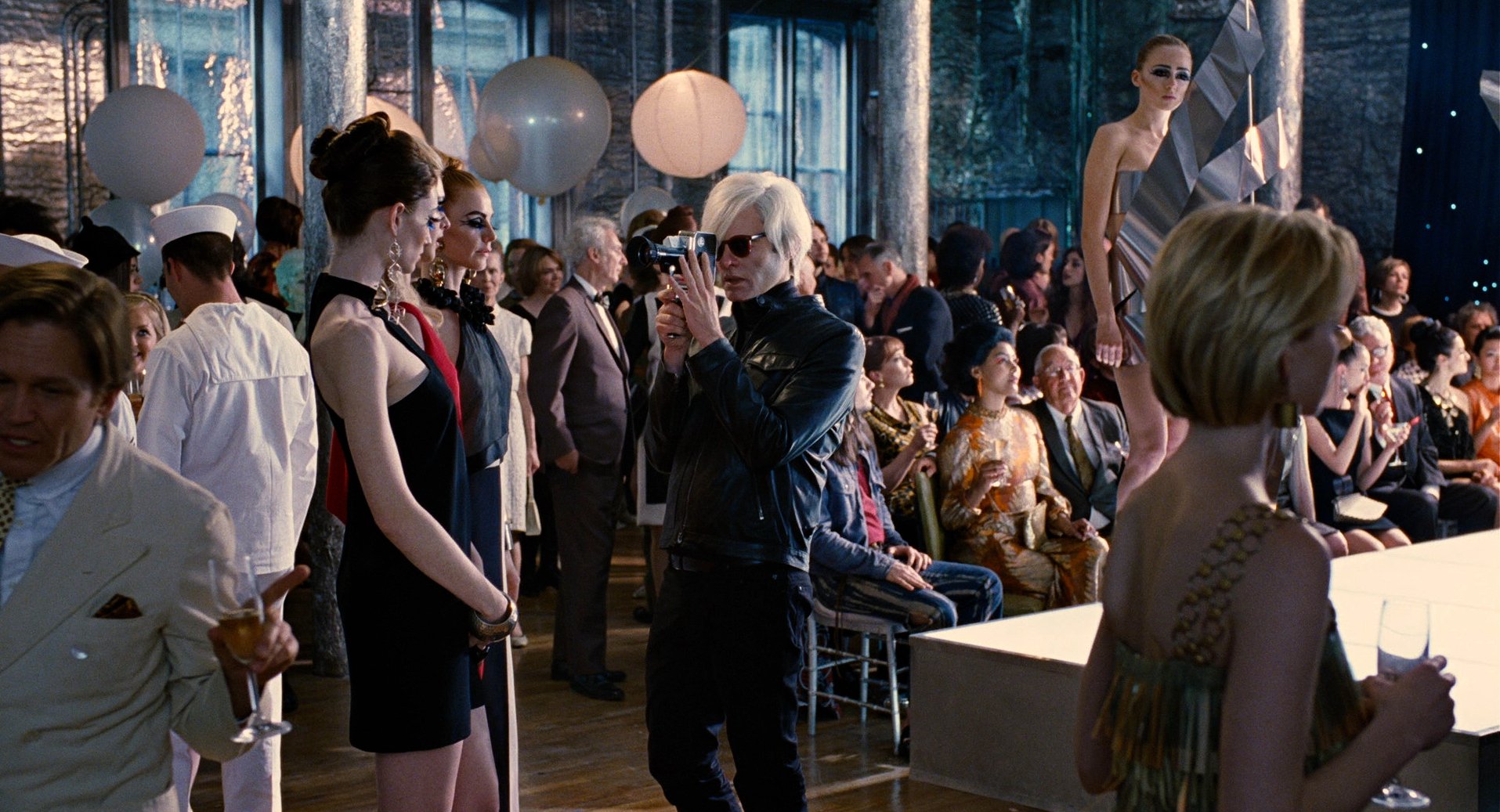Print Archive: George Watson, Filial
First published in The Art Paper Issue 04 — Lily McElhone on George Watson’s Filial; Envy6011, 9 September – 8 October 2022.
George Watson, Ko Wai Tō Mātua, 2022, pine cornice, New Zealand passport, house paint, tacks, 25 x 15 cm
At an indeterminate point in Aotearoa’s history, the kahuku, monarch butterfly, self-introduced to these shores. The migratory species
took leave from its annual traverse of North America and settled here, opting to overwinter in Tauranga Bay in the Far North instead of the Mexican rainforest. With its disregard for political borders, remarkably short life cycle, translucent velveteen wings, and fragile exoskeleton, the kahuku is an ephemeral thing.
In Ko Wai Tō Mātua, George Watson (Ngāti Porou, Moriori, Ngāti Mutunga) cuts butterfly silhouettes from the pages of a New Zealand passport and arranges them on an ornamental cornice. This places the butterfly in contrast with the unforgiving borders and oppressive socio-political structure of the settler-colonial state, treating the political weight of the passport with the frivolity and naïveté of a scrapbooking project. Thus, the transient butterfly motif reveals the arbitrary, colonially constructed nature of borders, citizenship, and statehood that Watson’s works often hinge upon.
Prisons were an early import to Aotearoa, established here in the early 19th century in order to impose colonial authority. They were initially constructed flimsily from wood and reeds, defeating their purpose as a means of containment. Barbed wire was introduced in the 1870s, the same decade that steel became widely available and iron ore mining began in Aotearoa. The establishment of one extractive industry enabled two more to grow: prison labour and agriculture. The impact of these industries on the physical and psychological landscape of the country is explored in Implantation, where Watson creates kōwhaiwhai patterns using barbed No.8 wire. The sculpture is mounted by its barbs, puncturing the surface of the wall, injuring the territory that supports it. Nonetheless, the artwork appears weightless, suspended spatially as well as contextually; the kōwhaiwhai is removed from the marae and severed from its function as a means of communicating whakapapa.
Luscious Tradition picks up the threads established in the settler-colonial-kitsch of Ko Wai Tō Mātua and the suggestion of constraint in Implantation. Here, a broken heart is woven back together with blue and white ribbon in a pattern evocative of Victorian corsetry, a symbol that highlights the expectations of propriety in a British colonial society and the restrictive experience of girlhood under patriarchy. The surface of the heart glitters with crushed pāua shell and mānuka flowers: similarly ‘pretty’ to the passport-page butterflies, but firmly of this land.
Four more mānuka flowers are set into the surface of Unborn in the pattern of Te Pae Mahutonga, the Southern Cross. In mounting and preserving the flowers, the complications of archival practice in a colonial context are explored: what do we choose to preserve and what remains ephemeral? Who gets to choose? Where do archival objects belong? After attending the repatriation of her Moriori karāpuna’s kōimi tangata from both the London Natural History Museum and regional museums in Aotearoa, these tensions were front-of-mind for Watson, who has Ngāti Porou and Ngāti Mutunga whakapapa and Moriori hokopapa. Watson recounts the experience of entering the Te Papa archives and receiving a clinically white, officially-stamped box containing the remains. The meticulous organisation and stabilised conditions of the archive begged the questions that run through Filial: what becomes of an object, of a symbol, when it is uprooted from its context? What becomes of the mānuka flower when set in resin, or the butterfly’s form when displayed in the confines of a gallery?
First published in The Art Paper Issue 04 — republished online on the occasion of Aotearoa Art Fair 2023, where Watson’s work will be exhibited.
Photography throughout: Cheska Brown
George Watson, Unborn, 2022, acrylic print, pink mānuka, resin, horse bit, 56 x 40 cm
George Watson, Filial. Installation view, Envy6011, Te Whanganui-a- tara, September 2022.
George Watson, Filial love, 2022, mirror, cnc cut acrylic, steel, 90.5 x 90 cm
George Watson, Luscious tradition, 2022, cnc cut mdf, tissue, printed material, paint, kokowai, paua shell, mānuka, ribbon, stainless steel fastenings, 860 x 890mm (excl. ribbon)
George Watson, Implantation, 2022, barbed wire, 120 x 76 cm
George Watson, Huia, 2022, inkjet photographic print, aluminium frame, 515 x 770mm
Left: George Watson, Kahu, 2022, acrylic print 400 x 300mm; Right: George Watson, Fur Elise, 2022, acrylic print, 400 x 300mm
George Watson, Filial. Installation view, Envy6011, Te Whanganui-a- tara, September 2022.





















Fergus Porteous on Rangi White’s Whakapapa Plasticus; Grace, 29 February – 30 March 2024.